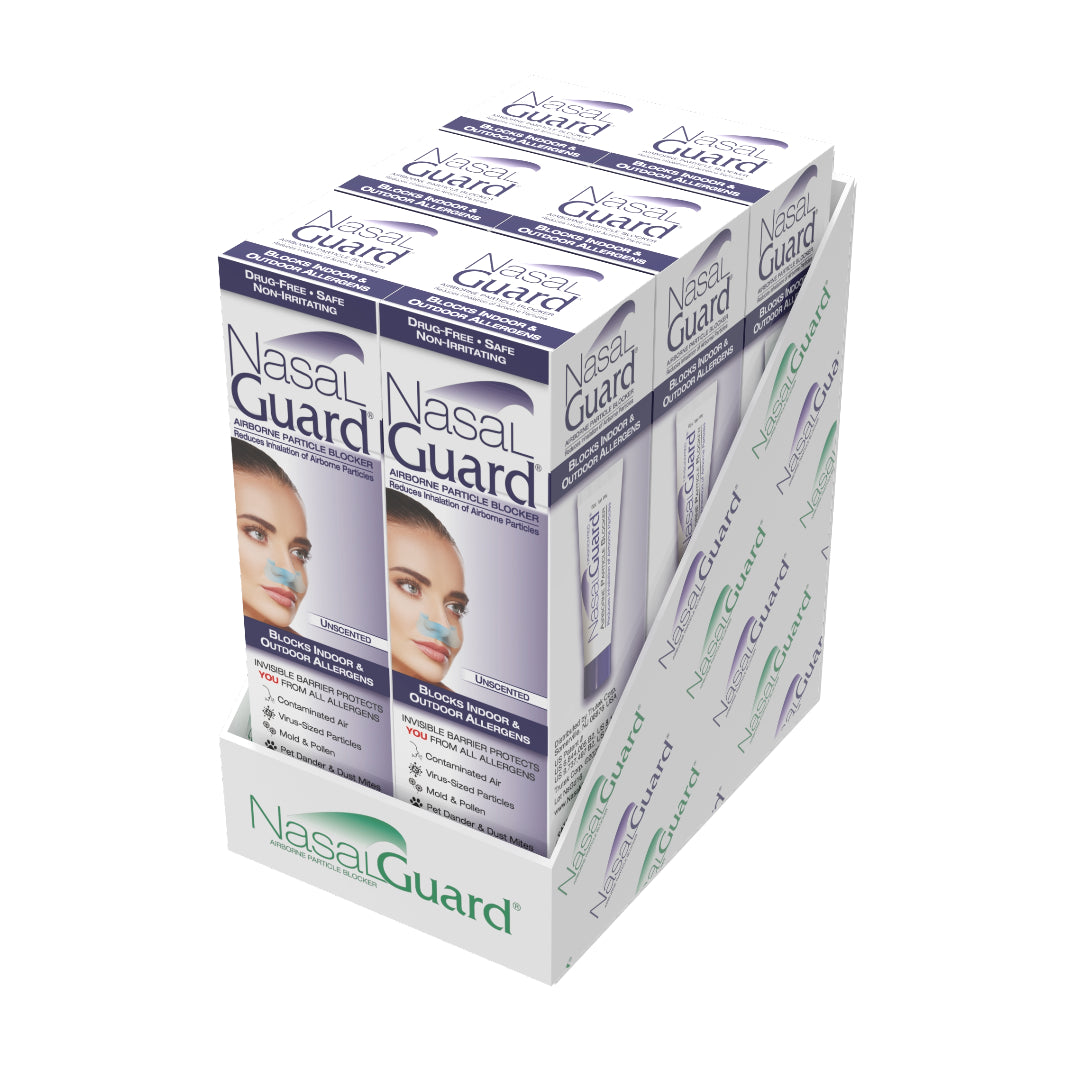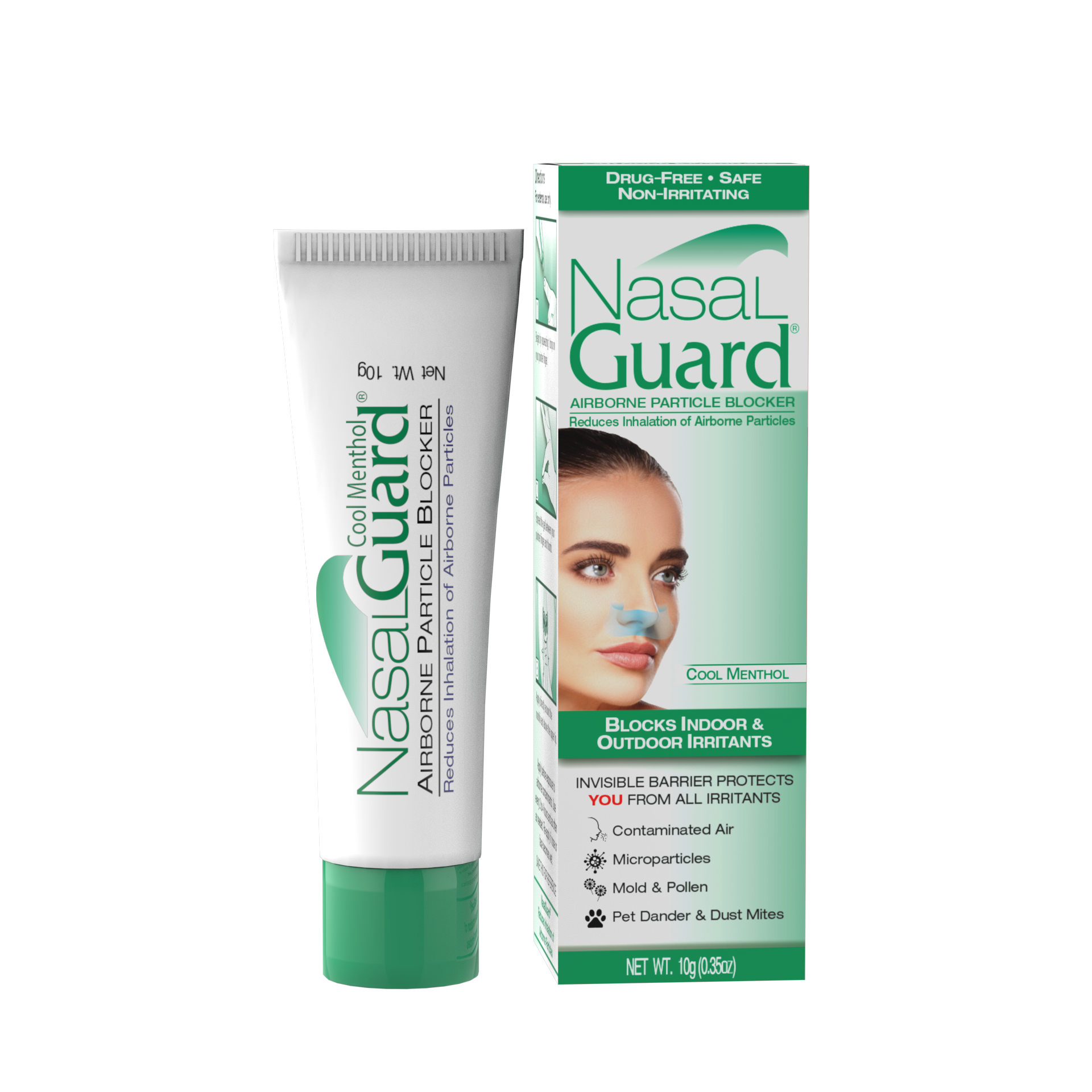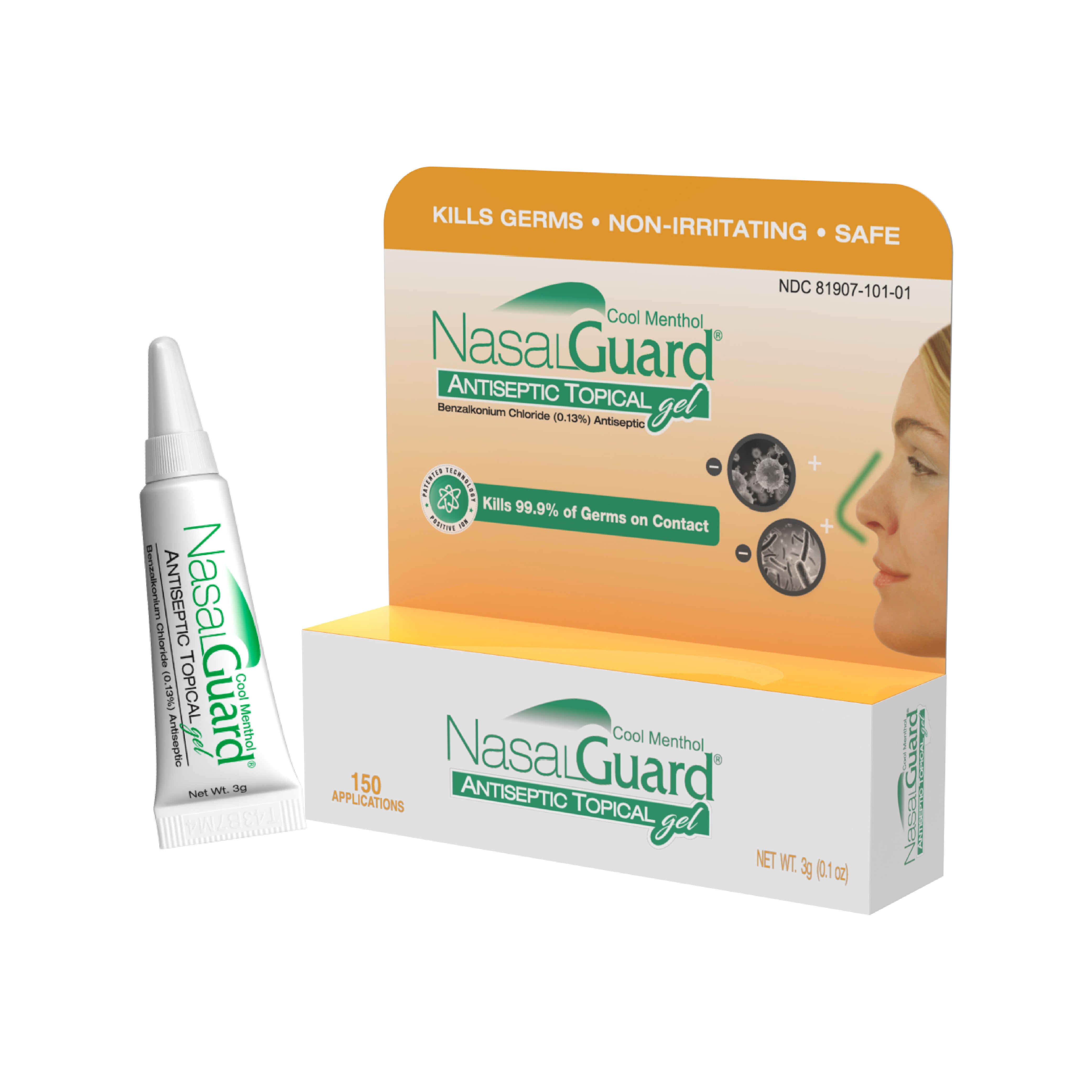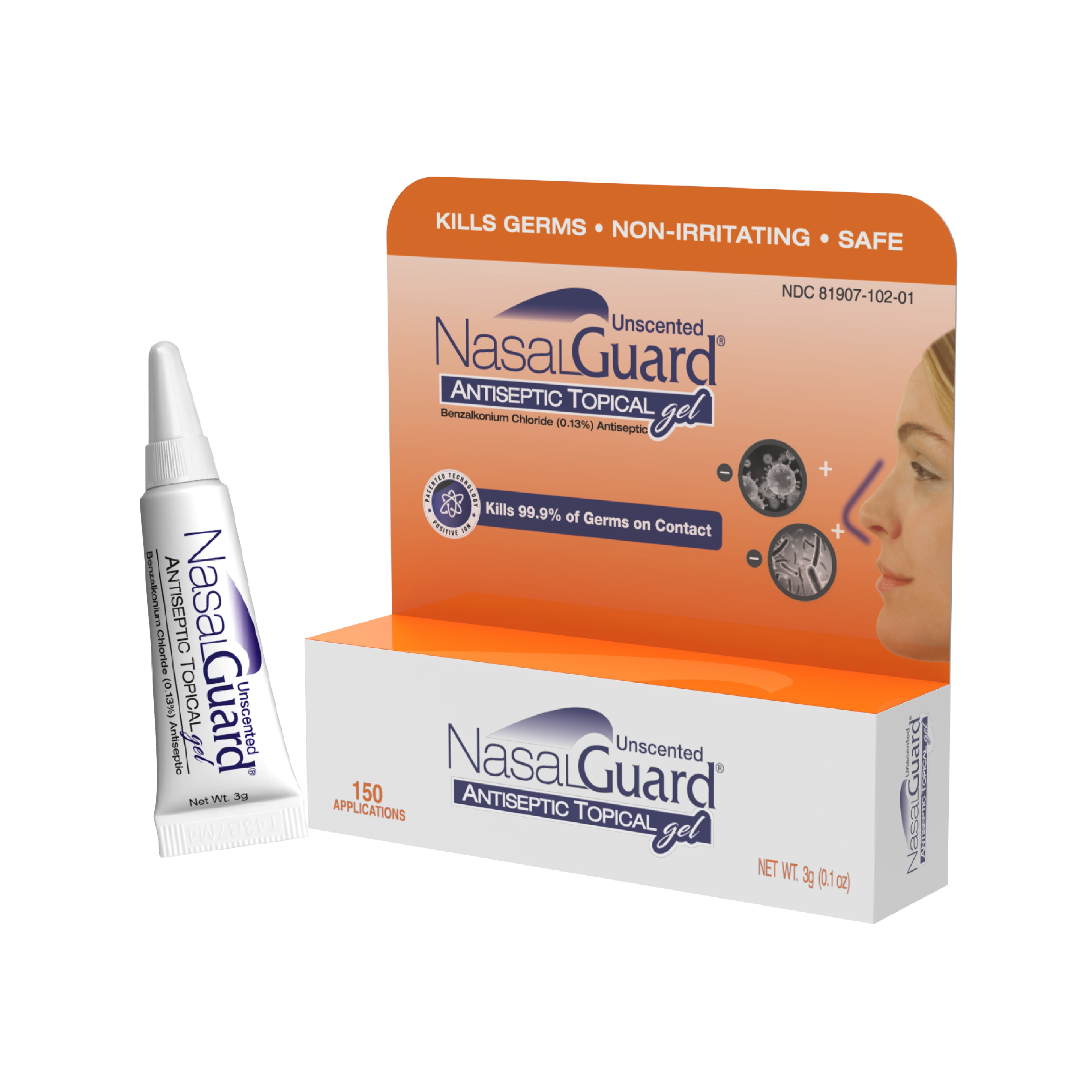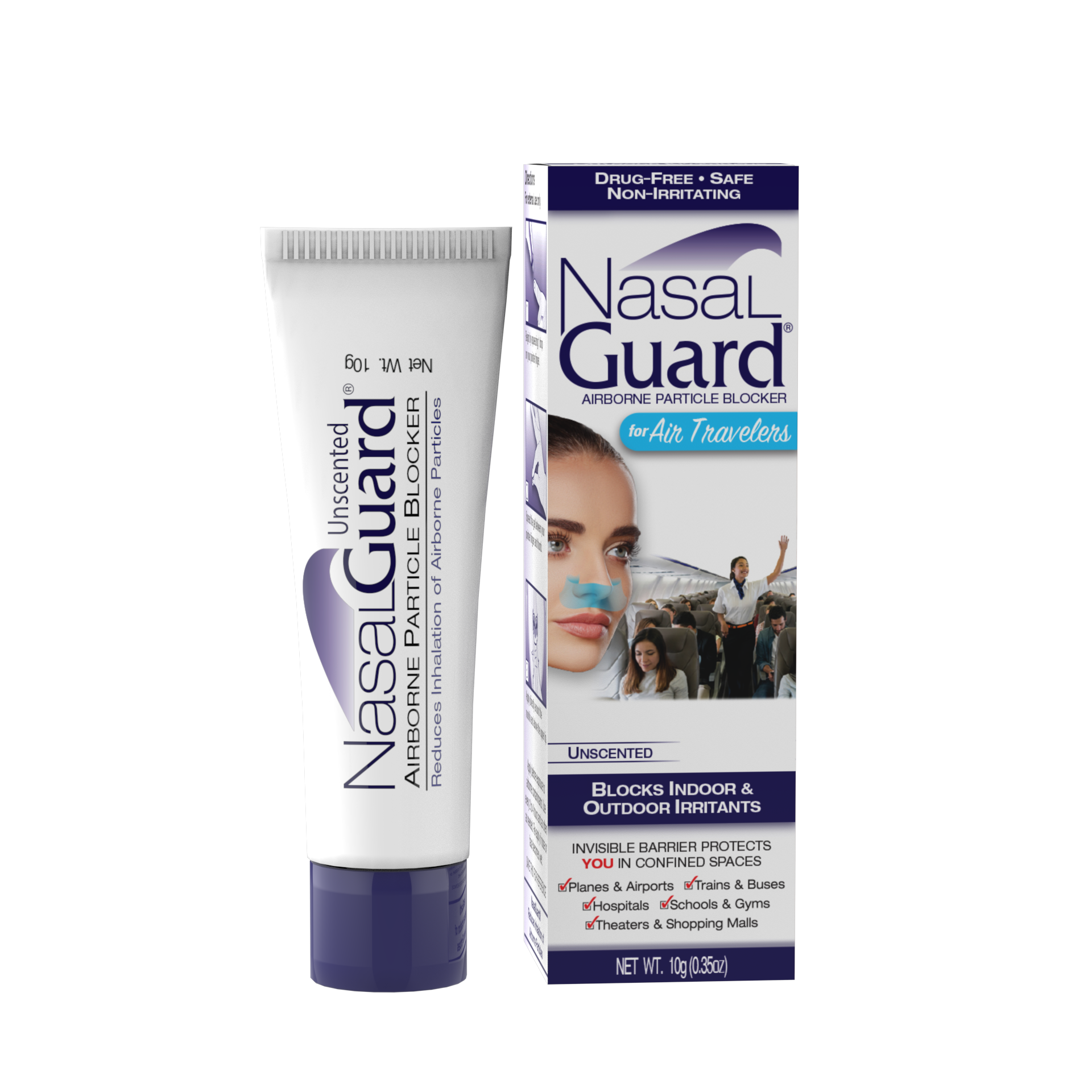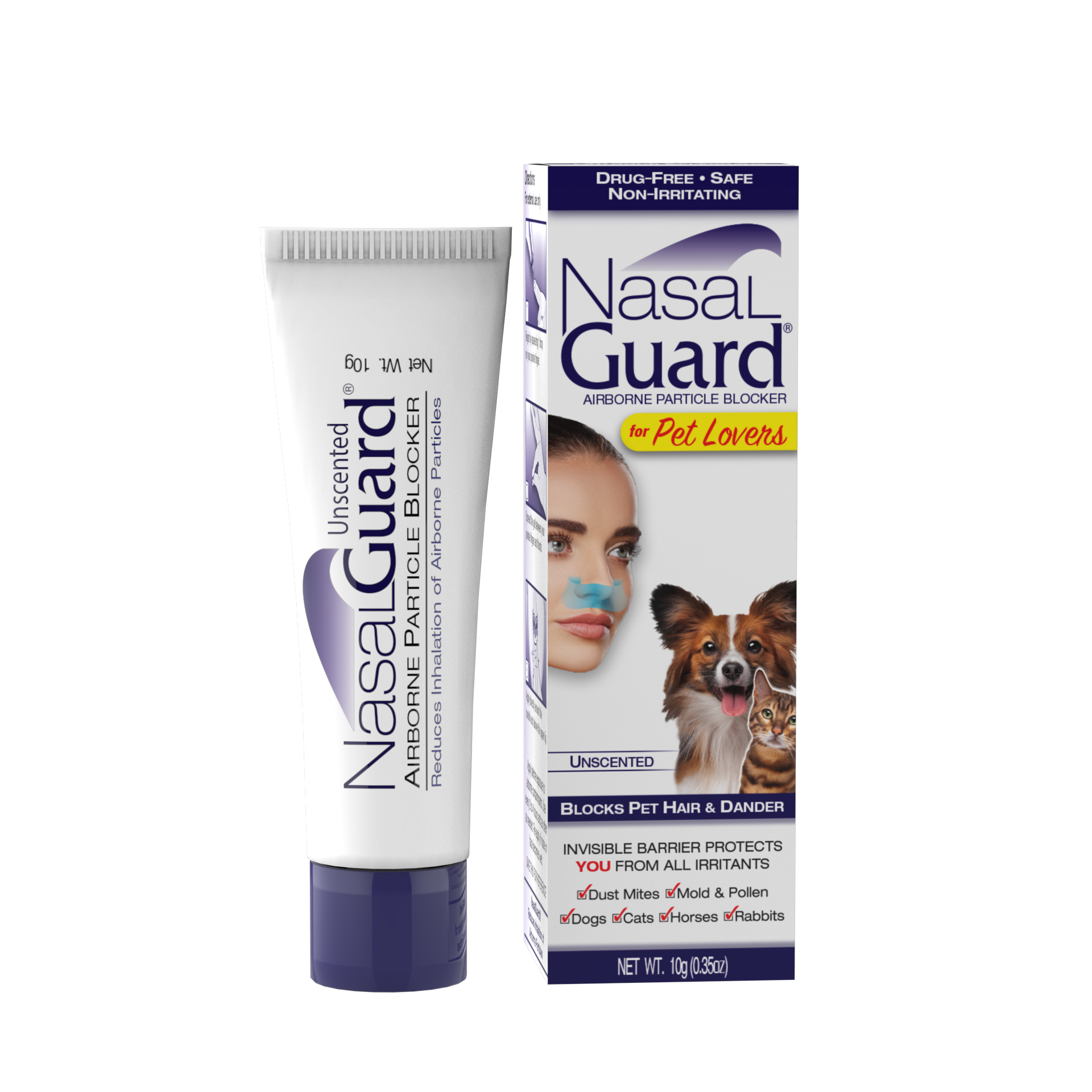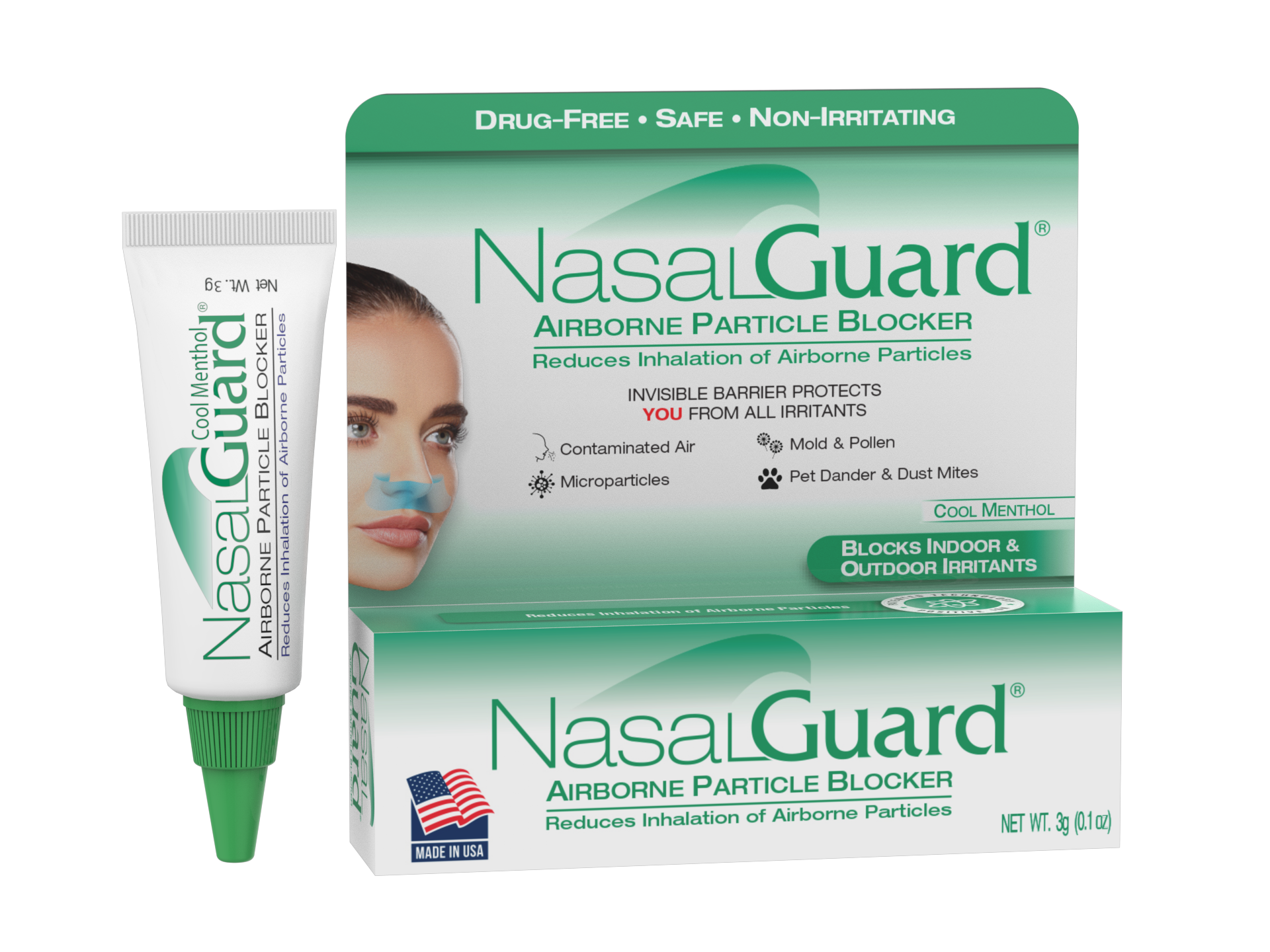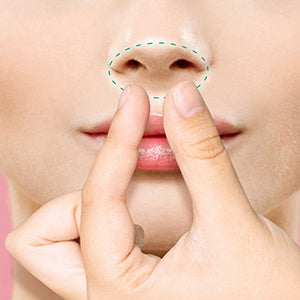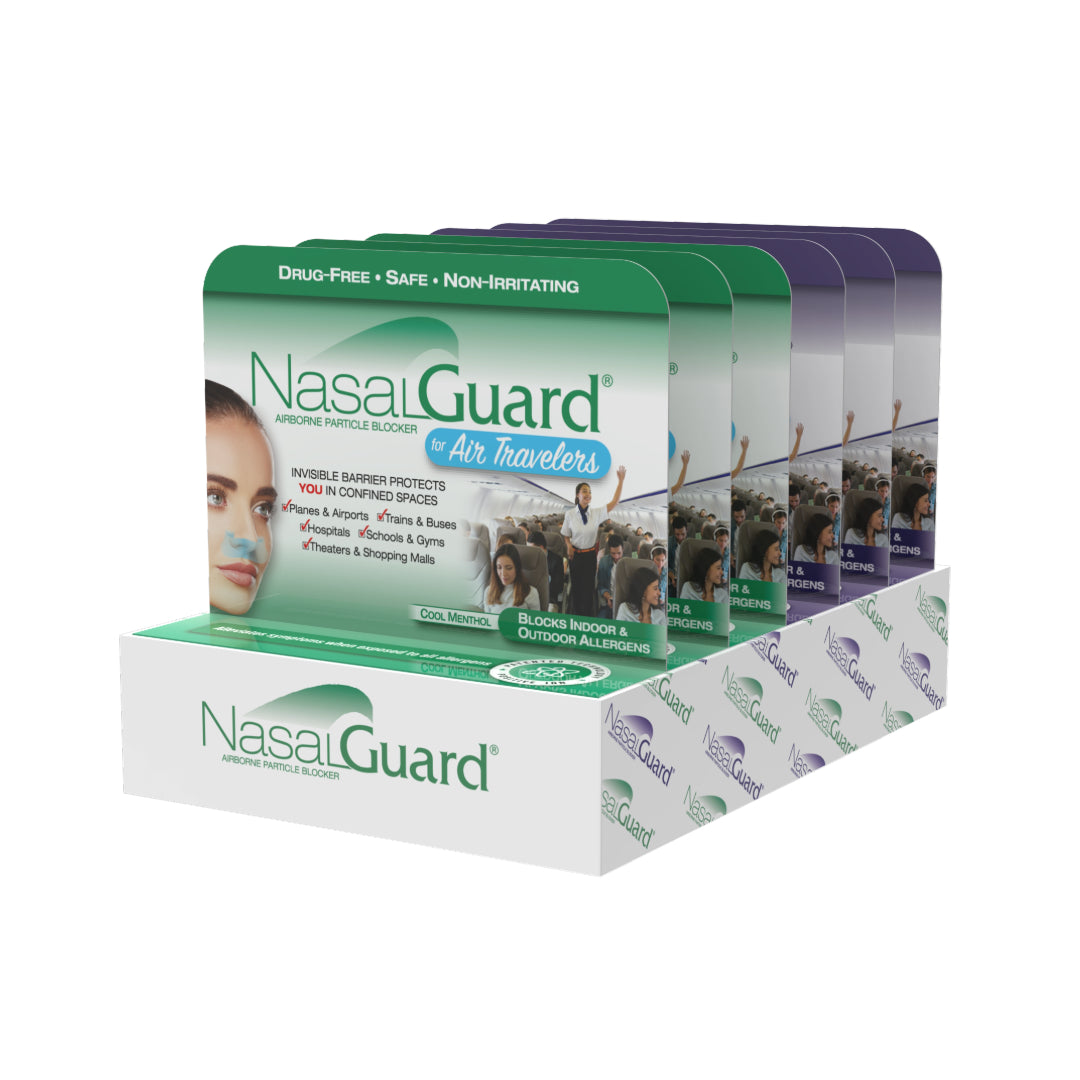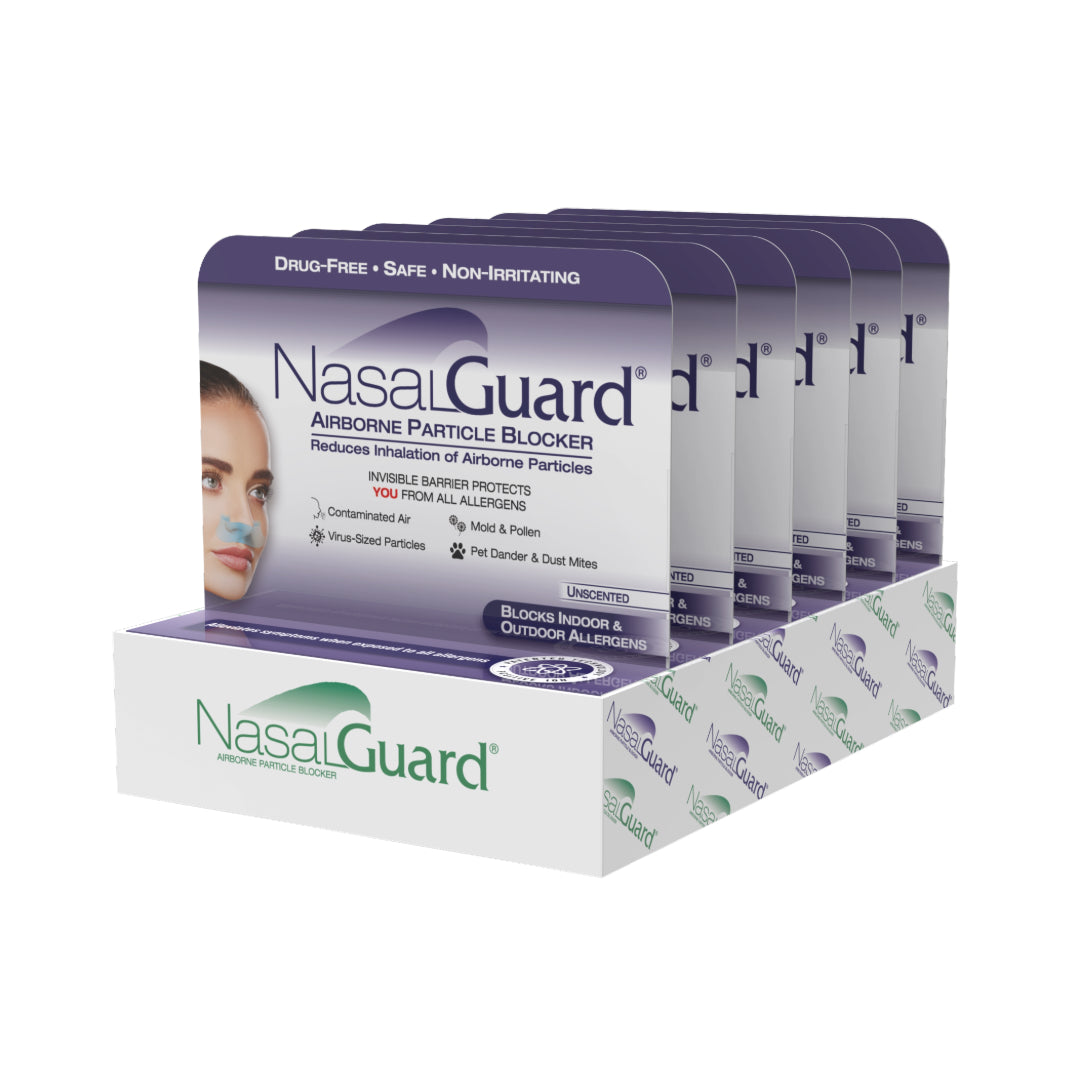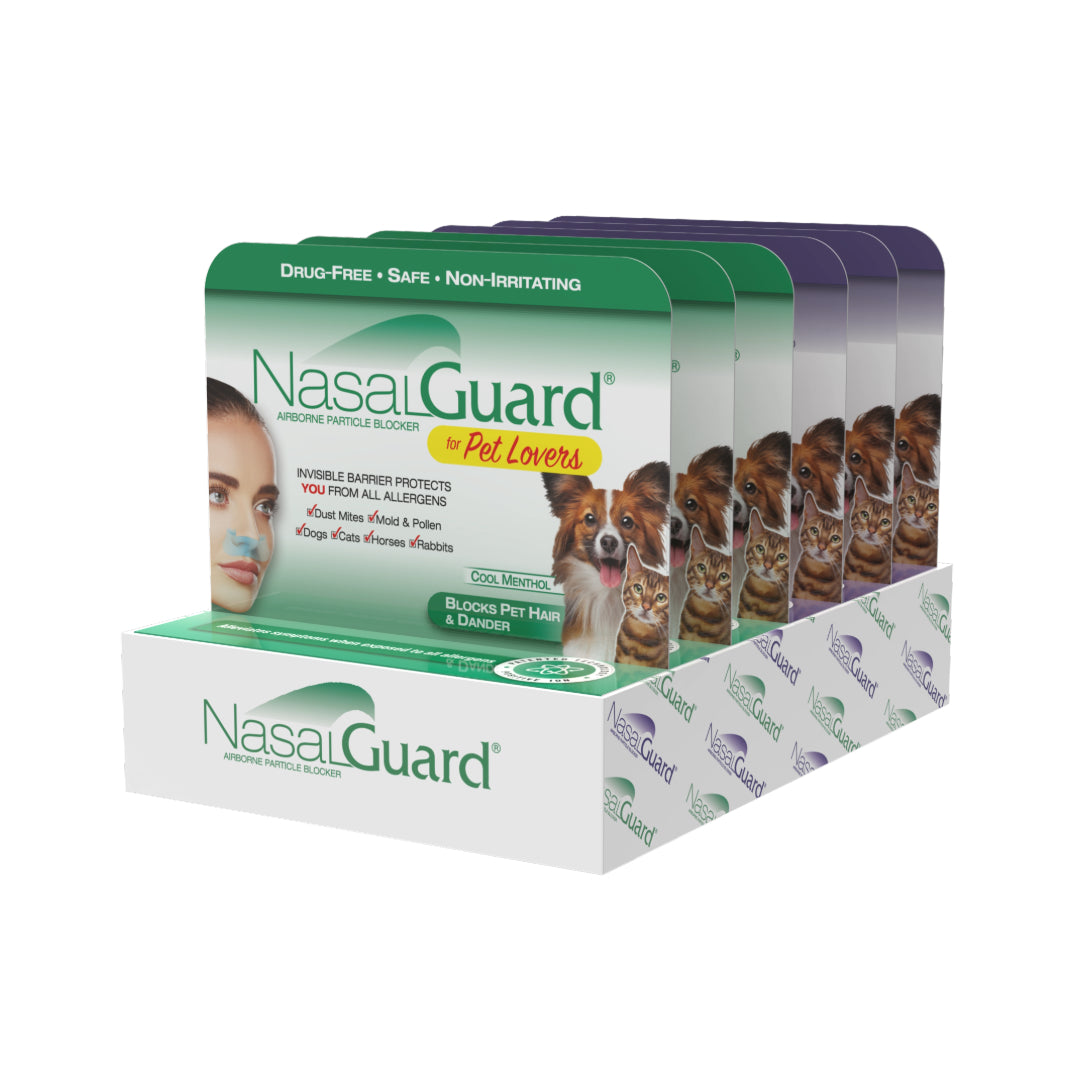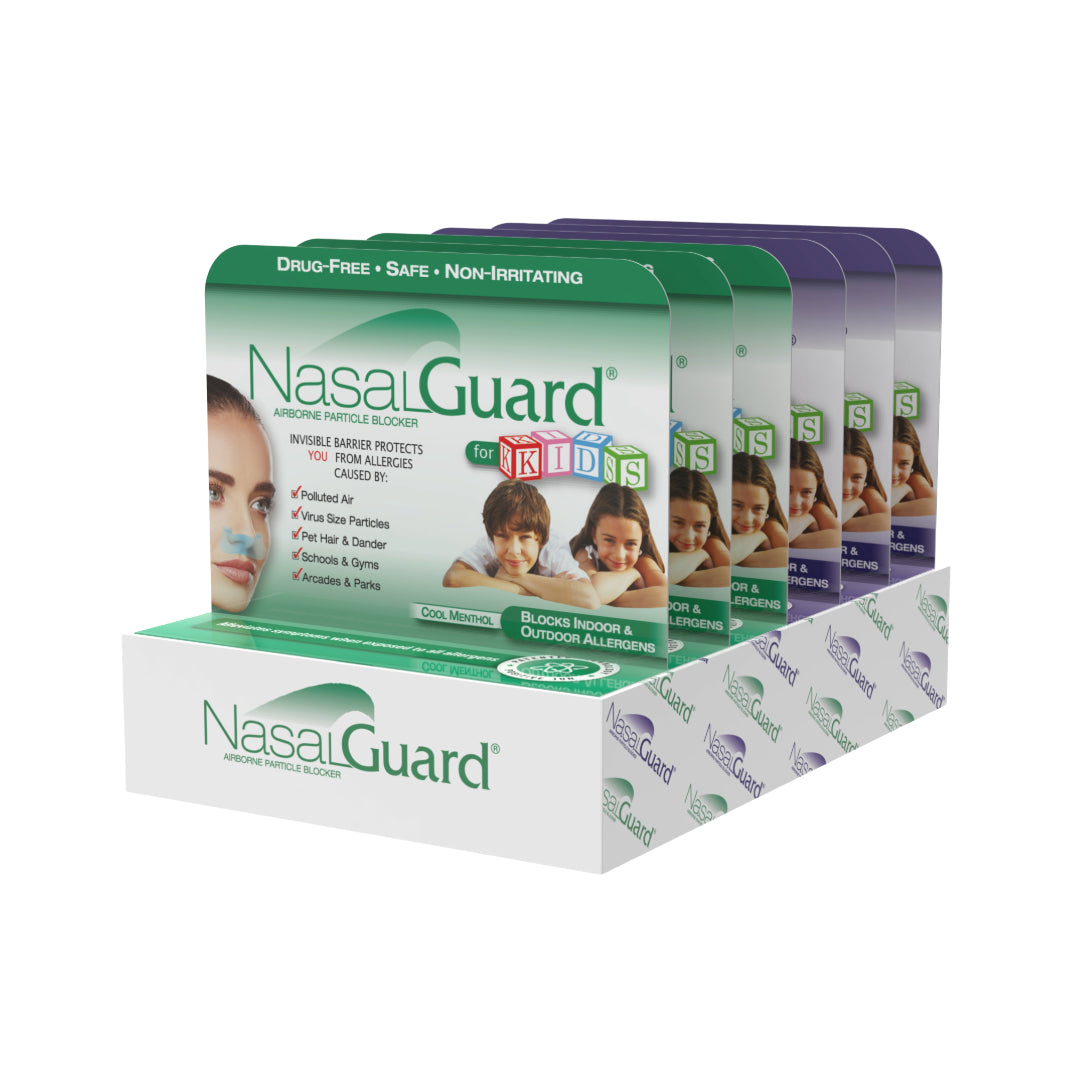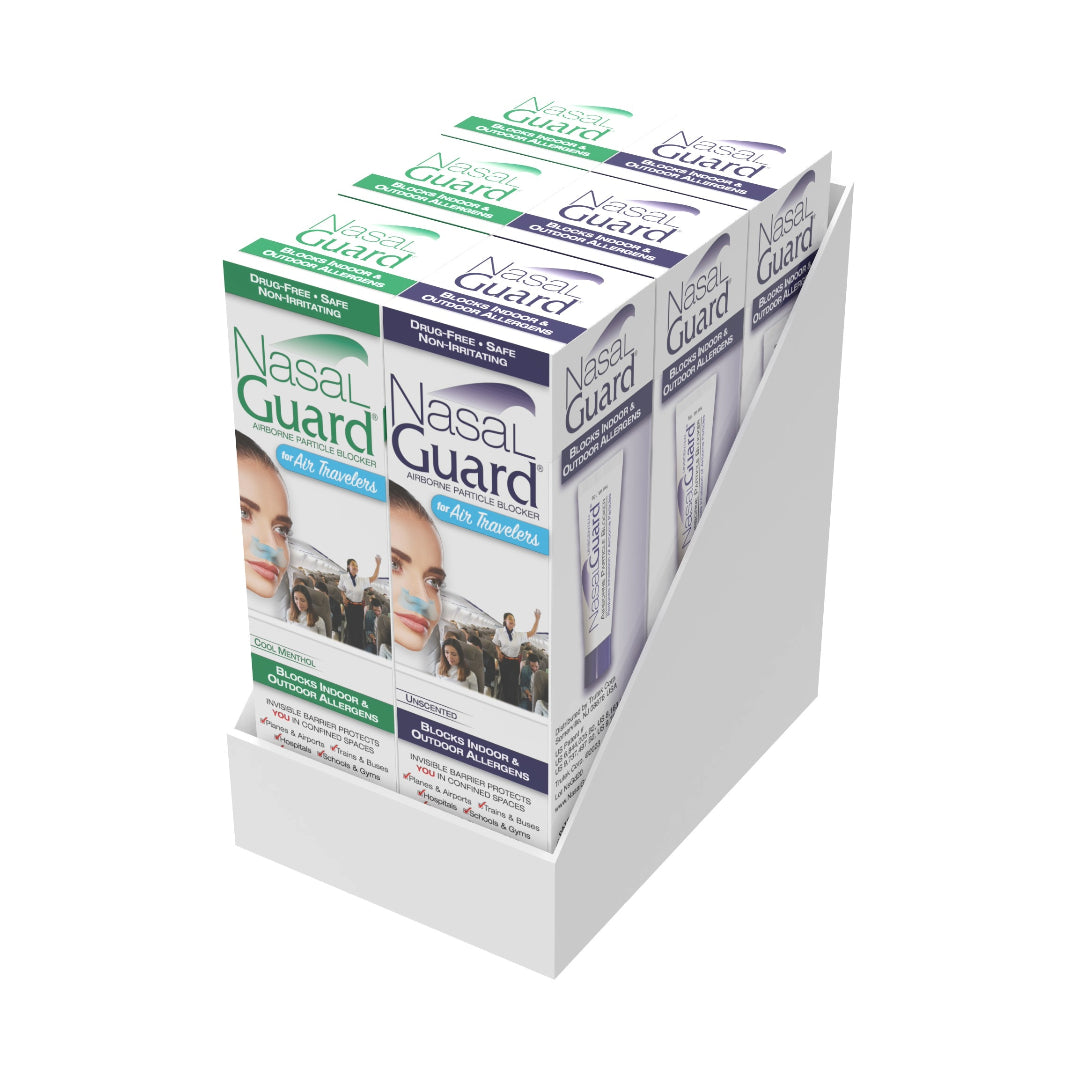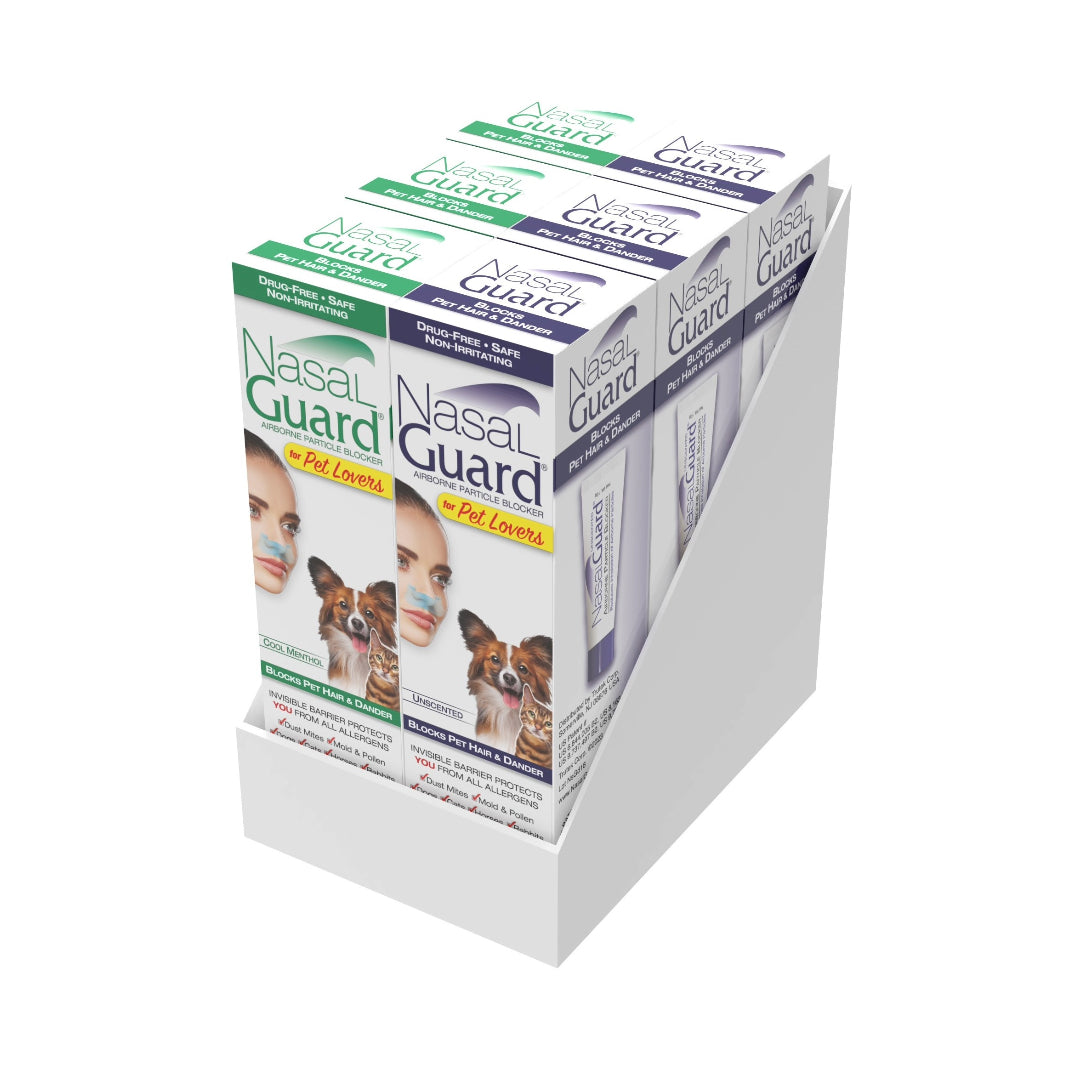Our collections
Protect your airways!
NasalGuard Multi-Packs
frequently asked questions
What is NasalGuard Airborne Particle Blocker?
NasalGuard Airborne Particle Blocker is a invisible gel, applied outside the nose, that uses electrostatic technology to reduce the inhalation of airborne particles before entering your nasal passages.
Why should I use NasalGuard?
NasalGuard creates an invisible, electrostatic barrier on the nose that helps block harmful airborne contaminants before they enter the nasal passages. It's drug-free, safe for all ages, and can be used alongside allergy medications without causing side effects. Travel-sized and easy to apply, it's perfect for added protection during travel, outdoor activities, or daily routines.
Is NasalGuard safe for children?
NasalGuard is safe for children of all ages. As always, please consult your pediatrician regarding any specific health concerns, and discontinue use if any irritation occurs.
Is NasalGuard made in the U.S.?
Yes, NasalGuard is manufactured in the USA.


